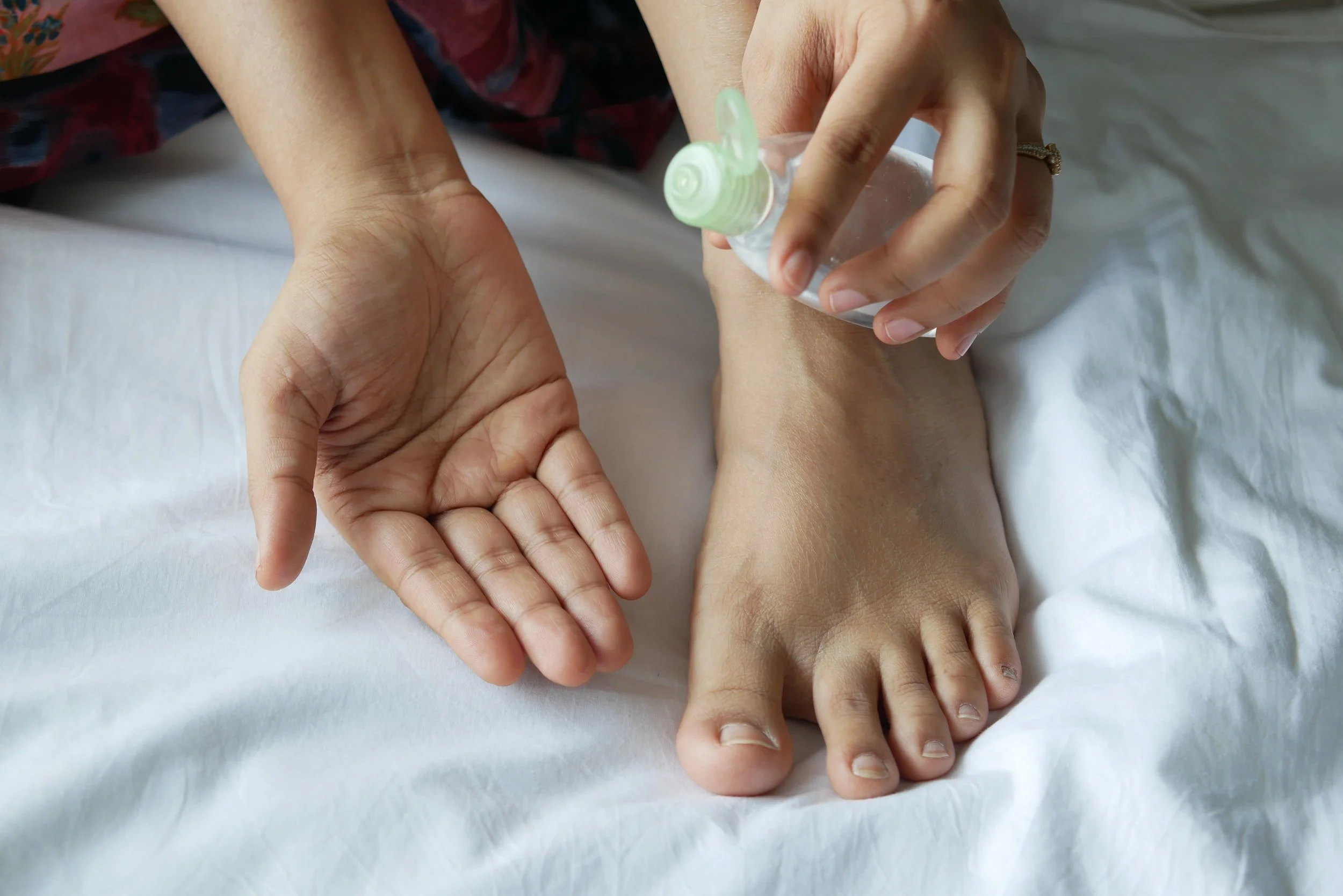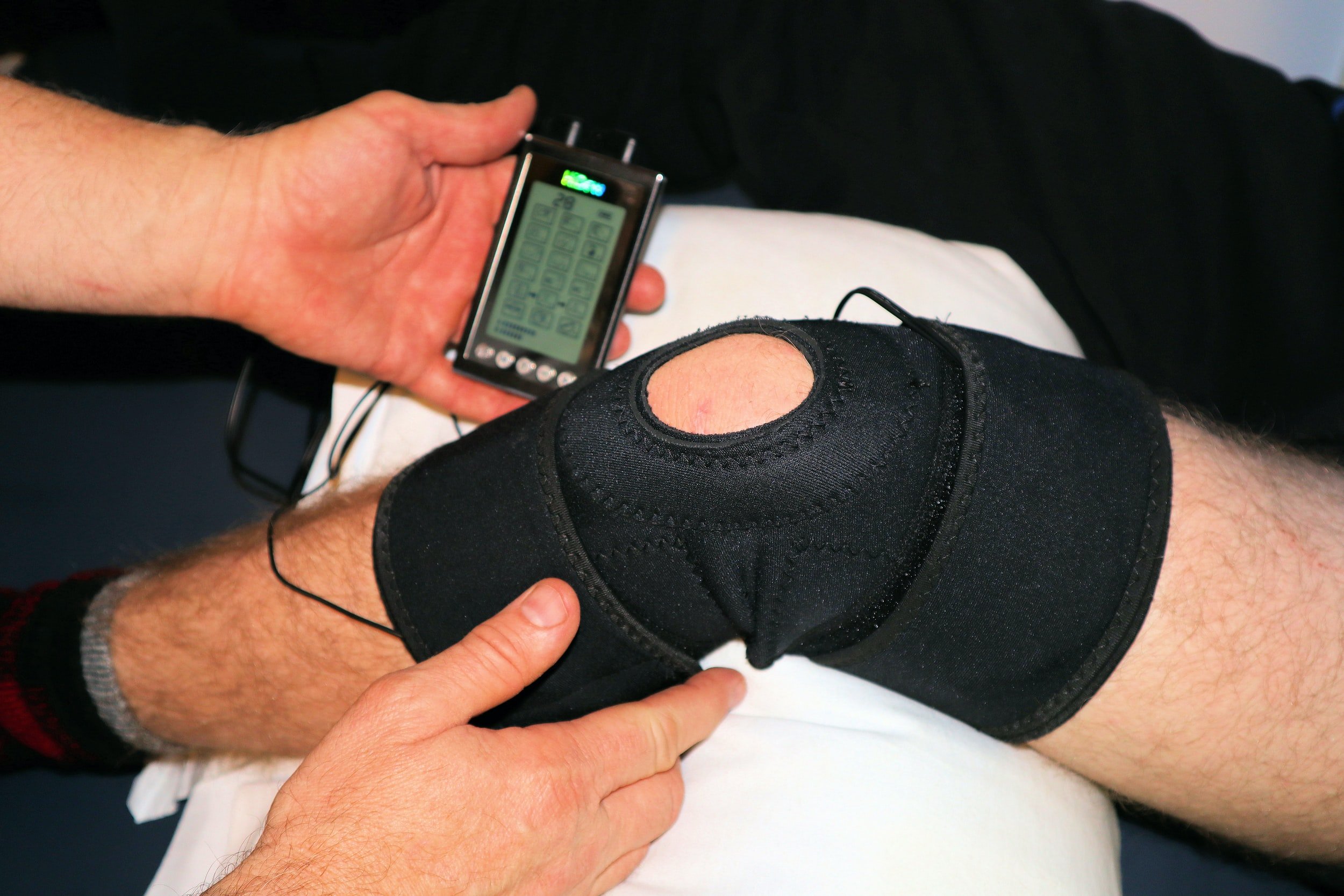Non-operative treatment for knee arthritis
written by Will Kurtz, M.D.
While there is no cure for knee arthritis, treatments for knee arthritis can relieve pain and improve function while patients live with their knee arthritis.
This article will discuss the five types of non-operative treatments for knee arthritis: oral medications, injectable medications, topical medications, exercises, and braces. When possible, we cite peer-reviewed articles that validate these treatment options. These treatments can hopefully eliminate or diminish a patient’s knee pain for a few years, but as the patient’s arthritis gets worse, these non-operative treatments become less effective. A knee replacement will eventually become necessary for most patients to maintain an active lifestyle.
Brief Overview:
Oral Medications:
NSAIDs
Acetaminophen
Oral Steroids
Dietary Supplements
Injectable Medications:
Cortisone Injections
Toradol Injections
Lubrication Injections
Zilretta Injections (long acting steroid)
Platelet Injections (PRP)
Topical Medications:
Voltaren Gel
Lidocaine Patches
Methol-based / Capsaicin creams
Exercise:
Unsupervised Exercise
Supervised Exercise/Physical Therapy
Yoga
Aquatic Therapy
Braces:
Bracing
Heel Cups
Oral Medications
NSAIDs
The AAOS guidelines strongly recommends NSAIDs to improve function and decrease pain from knee arthritis. (Altman, 2015) (Schnitzer, 2010) (Williams, 2000)
Many NSAIDS are available over the counter like:
Some NSAIDS require a prescription like:
Diclofenac, Meloxicam (Mobic), Celecoxib (Celebrex)
There are four potential complications of any NSAIDs that patients should consider before taking NSAIDS on a regular basis. The likelihood of having a complication goes up with dosage and duration of the treatment.
Gastrointestinal events - (gastric ulcers, GI bleed)
Renal/Kidney events
Cardiovascular thrombotic events - (hypertension, heart attack, MI)
Contra-indicated while taking blood thinners (Coumadin, Xalerto, Eliquis, etc.)
If patients have any of the above issues, they should consult their PCP before routinely taking NSAIDs. In short, if a patient had heart or kidney issues, then regular use of NSAIDS is not recommended. If a patient is taking NSAIDs and develops stomach pain, they should stop taking NSAIDs. Some patients may want to check blood work if they plan to take NSAIDs for a prolonged period of time.
Patients who take NSAIDs on a daily basis might consider selecting a 3-4 day period each month and not taking their NSAIDs for those days. Patients should give their body a break from NSAIDs every now and then.
Acetaminophen (Tylenol)(Paracetamol)
Acetaminophen has been shown to be effective in relieving pain and improving function in knee arthritis.(Prior, 2014) NSAIDs have been shown to be more effective than acetaminophen alone.(Pincus, 2004) One study suggested that NSAIDs and acetaminophen taken together may be synergistic and safe.(Doherty, 2011)
Steroids
Oral steroids (Prednisone) can alleviate patients’ arthritis pain but also elevate their blood sugars, weaken their immune system, cause weight gain, and increase their risk of osteoporosis if taken for prolonged periods of time. Oral steroids should not be considered an appropriate long term treatment of knee arthritis.
Dietary Supplements that may work
Curcuma longa extract (Turmeric) may improve knee function, and pain in patient with osteoarthritis of the knee. (Srivastava, 2016) The positive affects of turmeric are similar to the positive affects of NSAIDs but with fewer adverse events than NSAIDs.(Wang, 2021)
Dietary Supplements that don’t work
Glucusoamine and Chondritin have not been shown to improve knee arthritis pain or rebuild cartilage as shown in this NEJM study.
Injectable Medications
Cortisone/Steroids injection
Cortisone refers to a family of 4-5 different steroids (Depomedrol, Celestone, Methylprednisolone, Triamcinolone, or Kenalog). Steroids are tiny lipophilic molecules that can go through cell membranes, enter the nucleus of the cell, and shut off the production of inflammatory proteins and cytokines like IL-1, TNF-alpha, etc.
Because cortisone can move through cell membranes, a small portion of the cortisone can enter the capillaries around the knee joint and be transported throughout a patient’s body. Most of the steroid medicine works on the knee, but some of the steroid can affect the rest of the body.
Cortisone shots usually start working in a day and will typically last a few weeks to a few months.
Patients can get a cortisone shot every 3 months as long as the shots are effective. Each additional shot usually works about 90% as well as the previous shot which means most patients will benefit from 5-7 shots in their lifetime.
When patients no longer get any benefit from cortisone shots, it may be time to consider a knee replacement.
Diabetics may see a slight elevation in their glucose, and some patients report an increase in their appetite.
Patients with dark skin may occasionally have slight lightening of their skin color around the injection site.
Insurance does not require a prior authorization to get a cortisone shot because these shots are inexpensive.
The AAOS guidelines support the use of cortisone shots for pain relief and improved function in knee arthritis patients.(Jones, 1996) One study suggests that regular cortisone injections over 2 years can increase the deterioration of knee cartilage.(McAlindon, 2017)
Extended release cortisone injection
Zilretta is an extended release cortisone injection. The steroid molecule is encapsulated in a dissolvable microsphere that slowly dissolves over 3-4 months. The microspheres have a variable size which allows for some of the steroid to be released early and some to be released months later. Three studies suggest that extended release cortisone can provide longer relief than short acting cortisone injections.(Langworthy, 2019) (Bodick, 2015)
Toradol injection
Toradol is an injectable NSAID that can relieve knee pain. It usually works within a few hours but only last a few days. Dr. Kurtz often includes Toradol along with cortisone when he does a knee injection.
HA Lubrication injection
Lubrications shots are known by many names: Gel Shots, Viscosupplementation, Hyaluronic Acid (HA), chicken shots, and rooster comb injections. There are many brand names but the active ingredient is always hyaluronic acid (HA).
Monovisc, Orthovisc, Synvisc, Hyalgen, Supratz, Eufleuza
About a third of patients respond to lubrication shots. About a third of patients get no response.
The AAOS guidelines do not recommend lubrication shots because most research suggests little to no benefit beyond placebo effect.(Van Der Weegen, 2015)
Lubrication shots usually require a prior-authorization and failure of previous treatment (i.e. cortisone shot) for the insurance company to approve the shot. These shots usually cost around $~1000, which most insurance companies cover, but more and more insurance companies are being to deny payment for these shots.
Patients who want a lubrication shot should contact Dr. Kurtz and/or Kristie before they come to clinic, so Kristie can obtain the required prior authorization from the patient’s insurance company prior to their visit.
Platelet Rich Plasma (PRP) injection
Platelet Rich Plasma (PRP) shots involve drawing blood out of the patient’s arm, separating the platelets from the red blood cells, and injecting the platelets into the patient’s knee joint.
These platelets can be best thought of as sacks of chemicals (growth factors and other proteins) that burst open from mechanical trauma after they are injected into a knee joint.
PRP shots will not regrow cartilage.
They may relieve pain for 2-3 months, but don’t work for everyone.
Insurance does not typically cover the cost of these shots. TOA charges patients $~550 for a PRP shot which covers our cost of the kit used to spin down the platelets.
The AAOS guidelines for PRP suggest that PRP works for earlier stages of knee arthritis.(Rayegani, 2014, Gormeli’s 2017) study suggested that three PRP injections did better than one PRP injection, and that PRP does not work for advance knee arthritis. PRP injections seem to be more advantageous than HA lubrication injections. (Yaradilmis, 2020)
Injections that don’t work
Stem cell injections have not been shown to regrow cartilage or substantially improve knee arthritis symptoms. Injected stem cells have no capability of adhering to other cells on the articular surface. These injected stem cells just float around in a sea of synovial fluid until they rupture from mechanical trauma.
When considering the potential utility of stem cell injections, it is helpful to understand how knee cartilage is formed. Chondrocytes (cartilage cells) begin as immature chondrocytes about 3-4 mm below the joint surface. These immature chondrocytes are formed in a scaffolding with other immature chondrocytes. As these cells mature, they slowly advance to the joint surface like soldiers locked arm in arm. Each chondrocyte is connected to the next chondrocyte for their entire life of those chondrocytes.
As an analogy, if someone picks up a piece of tree bark on the ground and puts it back on the damaged tree, the bark will not grow back to the tree. The wind and rain will just knock the bark off the tree. Both chondrocytes and tree bark must remain connected to neighbor at all times.
As an optimist, one might argue that when stem cells rupture from the mechanical trauma, they might release helpful proteins into the knee just like a PRP injection. While these proteins inside stem cells could be beneficial, the high cost of these stem cell injections does not justify the theoretical benefit in my opinion.
Stem cell injections are not FDA regulated. They are not scientifically shown to improve arthritis symptoms. Please be careful in pursuing this option as there are many charlatans in this space. The Federal Trade Commission (FTC) is suing predatory stem cell clinics for making false claims.
Topical Medications
Voltaren Gel
Voltaren Gel is a topical NSAID that has been shown to improve pain and function in patients with knee arthritis. (Wadsworth, 2016) Voltaren is available in over the counter in pharmacies, grocery stores and Amazon. You do not need a prescription. Voltaren is a good option for patients who want to use a NSAID but have stomach ulcers or take a blood thinner.
Capsaicin / Menthol Cream
Capsaicin is the active ingredient in chili powder and causes vasodilation and makes our skin warm. Capsaicin may also help block some pain nerves. Menthol causes vasoconstriction and makes our skin cool. Icy Hot, Bengay, and Biofreeze are examples of these sorts of creams.
Lidocaine patches
Lidocaine patches are a modest way to relief some minor knee arthritis pain. Salonpas are an over the counter version of lidoderm patches. Stronger lidoderm patches are available with a prescription.
CBD / Hemp Oil
The orthopedic literature on CBD and hemp oil is limited.
Exercises
Unsupervised Exercises / Home Exercise Program
Unsupervised exercises can improve patients’ function even when the patient has significant co-morbidities.(de Rooij, 2016) Many studies show similar results between home exercise programs and structured physical therapy programs. (Allen, 2018) Tai Chi has been shown to improve balance and proprioception in knee arthritis patients. (Hu, 2020)
When performing unsupervised exercise, closed chain exercises are preferable to open chain exercises for patients with knee arthritis. Closed chain exercises mean that the patient’s foot stays on the surface during the exercise. Examples of closed chain exercises include road bike, stationary bike, recumbent bike, rowing machine, elliptical machine, leg press, and Nordic track. Examples of open chain exercises include running, jogging, walking and jumping.
Supervised Exercises / Physical Therapy
Physical therapy can help some patients strengthen muscles and improve mobility. PT is also helpful to get patients prepared for a knee replacement.
Yoga
Integrated yoga therapy can improve patients’ pain and function. (Ebnezar, 2011) showed that patients who did a 2 week intensive yoga program (asanas, relaxation techniques, pranayama, meditation) performed better than patients who did a similar physical therapy program. Yoga is generally safe for most patients, but some patients may need to modify some positions and exercises according to their physical condition.
Aquatic Therapy
Aquatic therapy has been shown to improve pain and function in patients with knee arthritis. (Dias, 2017). Aquatic therapy is available at the Vanderbilt Dayani center and many YMCAs around Nashville.
Weight Loss Program
A combination of diet and exercise to achieve weight loss has been shown to be affective at decreasing knee arthritis pain.(Jenkinson, 2009) Other studies showed that weight loss with diet decreases knee arthritis pain. (Christensen, 2015) (Bliddal, 2011)
Braces
Unloader knee brace
Patients who are highly motivated to wear a brace may benefit from an unloader brace. An unloader brace is designed to shift the weight off the arthritic side of the knee and on to the normal side of the knee. Most braces are cumbersome and difficult to wear. They can sometimes be painful. Compliance with knee braces is low. Dr. Kurtz will provide braces for motivated patients, but does not want to waste his patient’s money or time doing something that will likely fail.
The idea with bracing is to force the weight through the part of the knee with the best cartilage. For instance, most knees are worn out on the inside or medial compartment (varus knee arthritis). A medial unloader brace will push the knee in and foot out and thereby shift the load to the lateral compartment of the knee where the cartilage is healthier.
The AAOS guidelines support the use of bracing in motivated patients.
Palumbo Brace
A palumbo brace is a simple way to modestly improve patella femoral tracking and symptoms.(Callaghan, 2015)
Heel Cups / New Shoes
Viscoelastic heels cups are a cheap and easy way to cushion a patient’s knee joint while they walk.
Buying new tennis or running shoes is also an important way to maintain an activity life while living with knee arthritis.
Canes / Walkers
Canes and walkers have been shown to help knee arthritis pain for elderly patients. Most importantly, assisted devices can help reduce fall risk.
The AAOS guidelines feel there is insufficient evidence to recommend use or not use of:
massage,
laser treatments,
acupuncture,
TENs (transcutaneous electrical nerve stimulation),
extracorporeal shock wave treatments, and
denervation.
Denervation can be accomplished with cryoneurolysis (Iovera)(Radnovich, 2017), chemical neurolysis, or thermal neurolysis.
The AAOS guidelines feel there is sufficient evidence to recommend against the use of:
for the treatment of knee arthritis.
These non-operative knee arthritis treatment can be continued as long as the patient feels like these treatments are beneficial. In the end, non-operative treatment eventually becomes ineffective, and patients typically need to consider a knee replacement. For more information about knee replacements, please read Dr. Kurtz’s knee replacement guide.
Dr. Will Kurtz
Dr. Will Kurtz is a hip and knee replacement specialist. He sees patients at the TOA OneCity office on Monday afternoons, Wednesday afternoons, and Friday afternoons. He sees patients at the TOA Hendersonville office on Monday mornings, Brentwood office on Wednesday mornings, and at the TOA Lebanon office on Friday mornings. He typically operates on Tuesdays and Thursdays.







